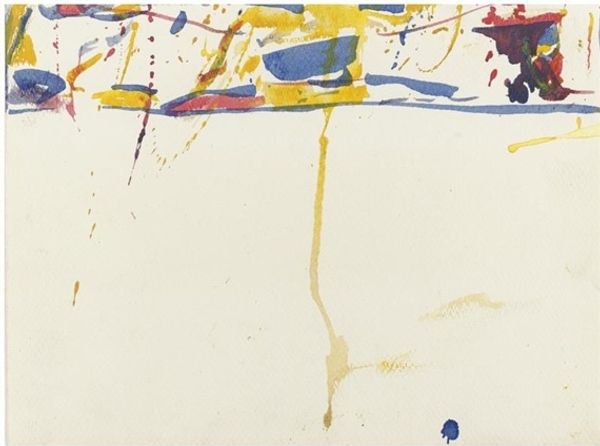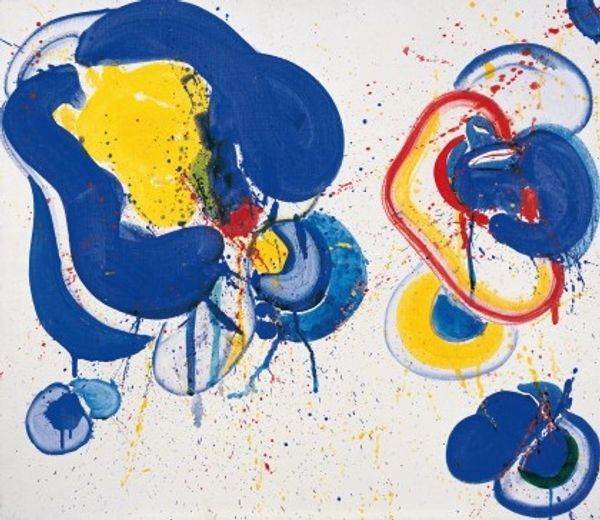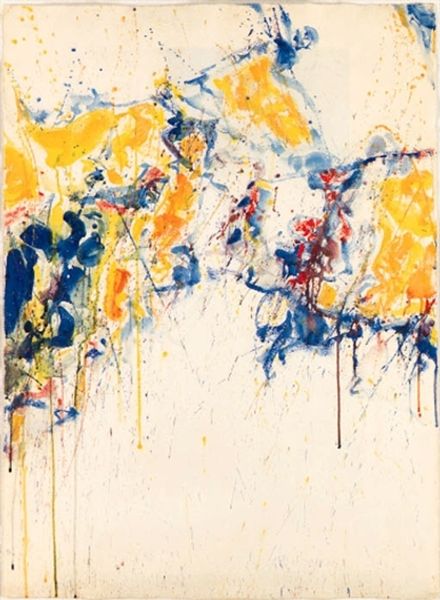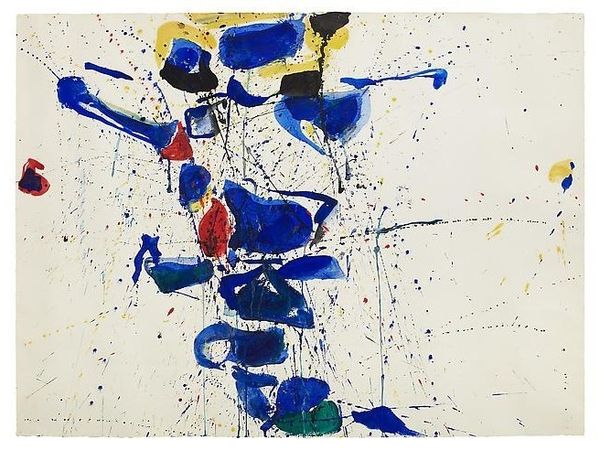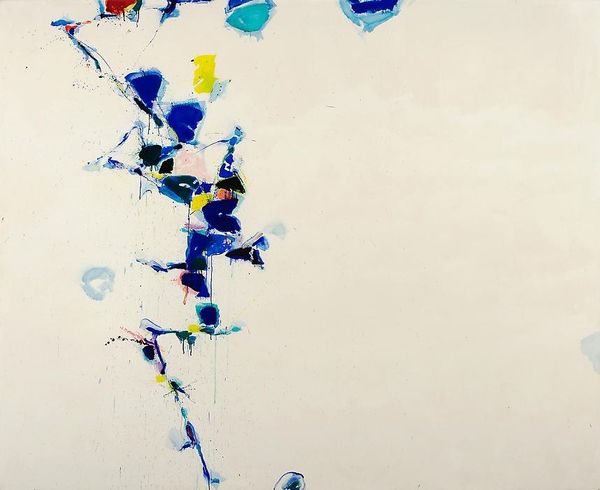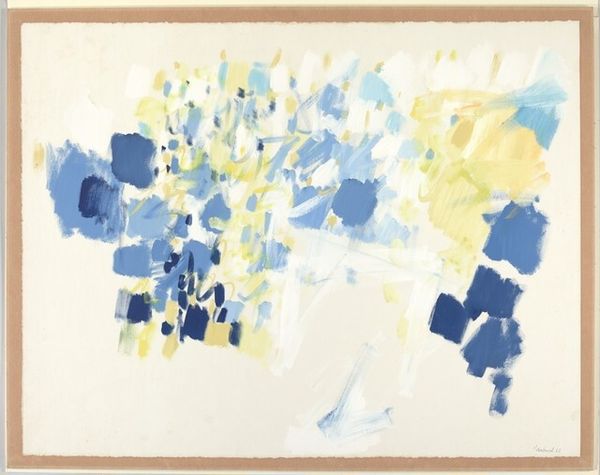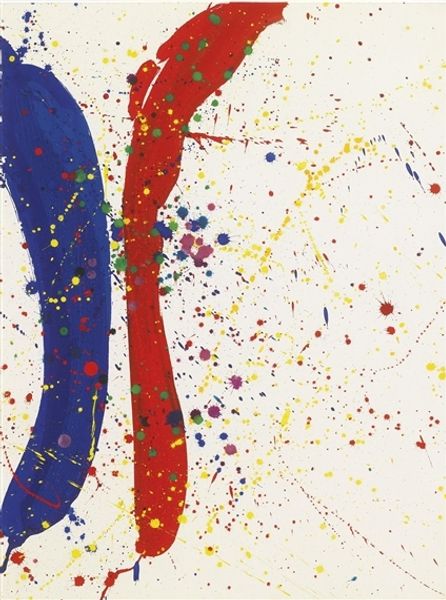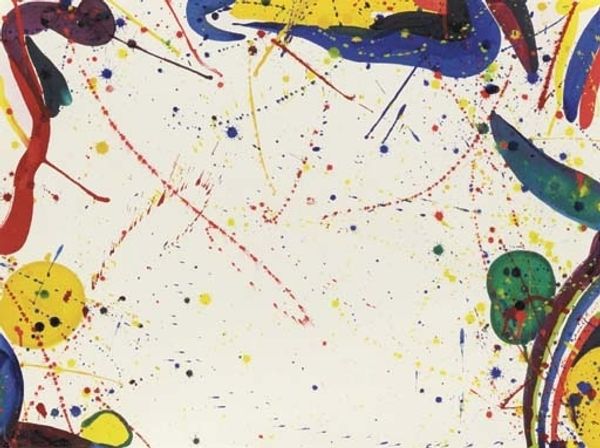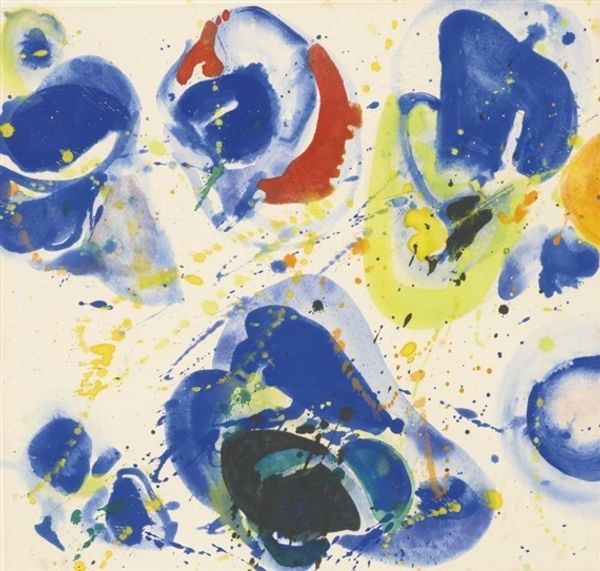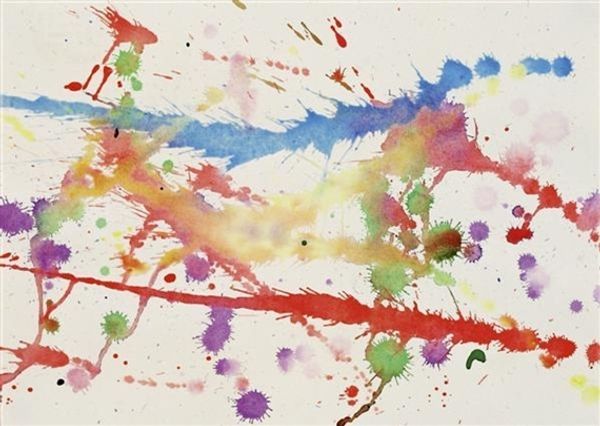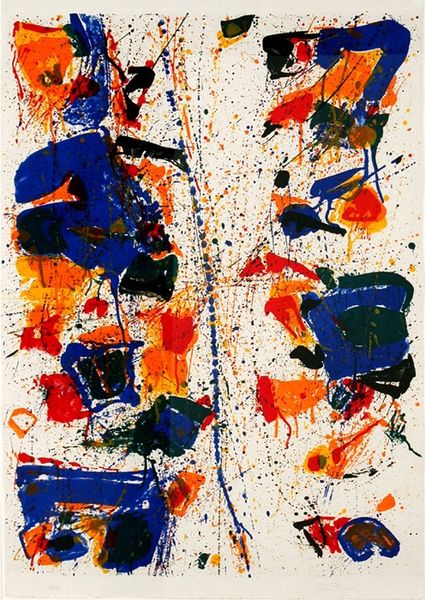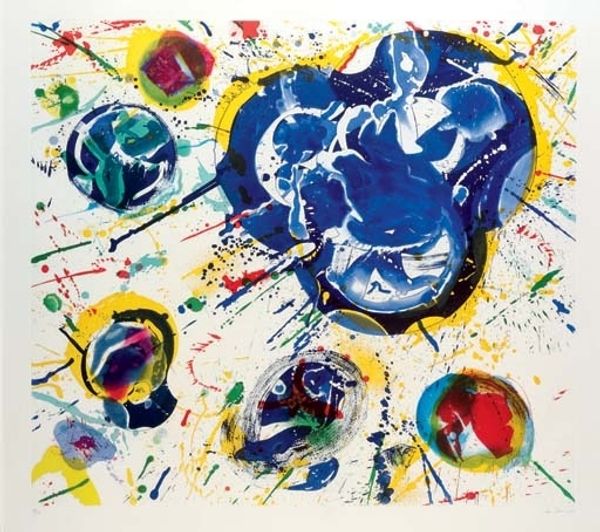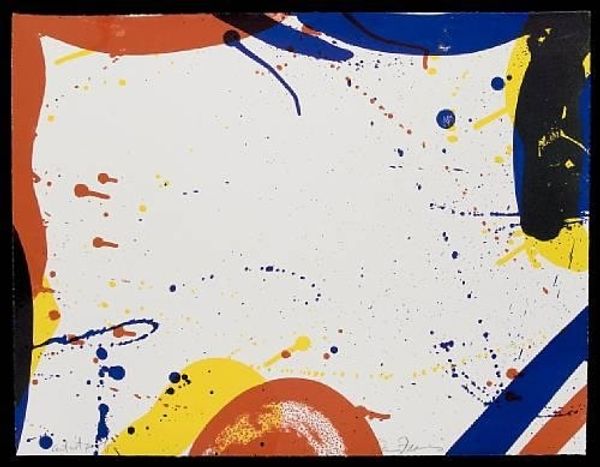
painting, acrylic-paint
#
abstract-expressionism
#
abstract expressionism
#
non-objective-art
#
painting
#
acrylic-paint
#
geometric-abstraction
#
abstraction
#
allover-painting
#
abstract art
#
modernism
Copyright: 2012 Sam Francis Foundation, California / Artists Rights Society (ARS), NY
Curator: This is Sam Francis' "Foot Print" created in 1960, a compelling example of abstract expressionism rendered in acrylic paint. Editor: It’s incredibly sparse. At first glance, the painting feels unfinished, or perhaps like a preparatory sketch, an experiment with the materiality of paint itself. Curator: That "unfinished" quality, as you call it, is key. Francis challenges the traditional idea of a complete composition. He leaves large portions of the canvas bare, allowing the white ground to become an active element. The splashes and drips, the controlled chaos, are integral to understanding its place within the art-historical narrative of mid-century America, marked as it was by an avant-garde striving toward absolute abstraction. Editor: I agree. Focusing on materiality, I am struck by the ways Francis manipulates acrylic paint – its fluidity is crucial. The scattered arrangement allows you to really trace his movements, almost literally mapping out the artistic gestures that brought "Foot Print" into being. The title hints, perhaps, that this canvas is a site of production. Curator: Indeed. "Foot Print" speaks to broader artistic trends in which ideas around identity were undergoing a conceptual shift; you see that even in the way he thins the paint allowing it to stain the canvas almost like watercolour. The interaction between color and ground embodies a very specific philosophy about presence and absence. How do race and gender, and how can one leave an "imprint" on the social canvas when confronted with systems designed to efface them? Editor: Considering his process within the larger studio ecosystem of the era makes "Foot Print" even more captivating. There is a direct connection between Abstract Expressionism's sweeping gestures and, for instance, the design of Cold War-era consumer goods and architecture. It’s all a matter of material availability and application, really. Curator: True, the act of artmaking became itself a potent form of expression – even rebellion. Thank you for grounding it in materiality and manufacturing; a crucial vantage for this era of experimentation and cultural disruption. Editor: My pleasure. Now, to go explore how artists are reacting to, and engaging with, Sam Francis’ legacy of “material presence.”
Comments
No comments
Be the first to comment and join the conversation on the ultimate creative platform.
